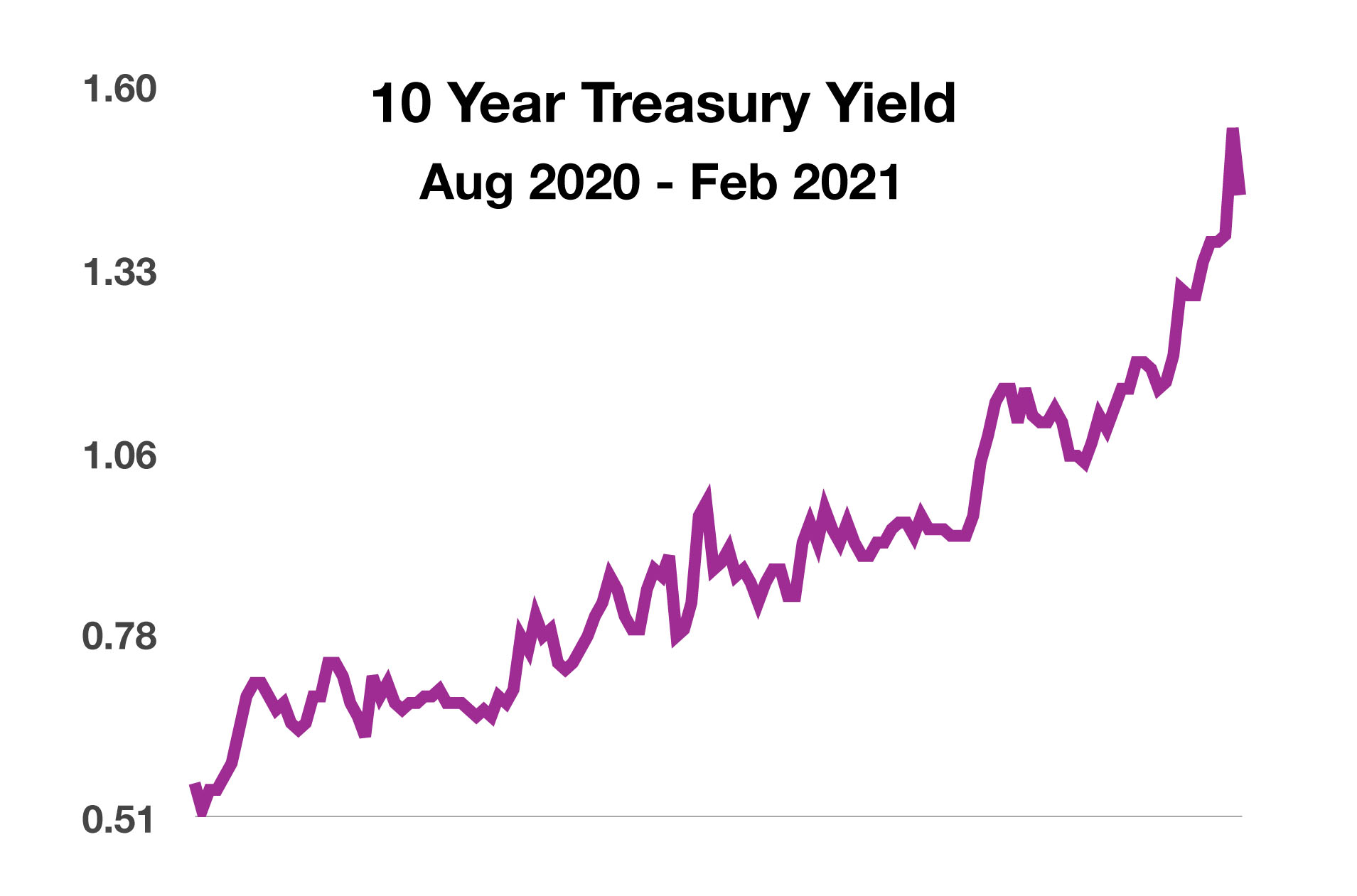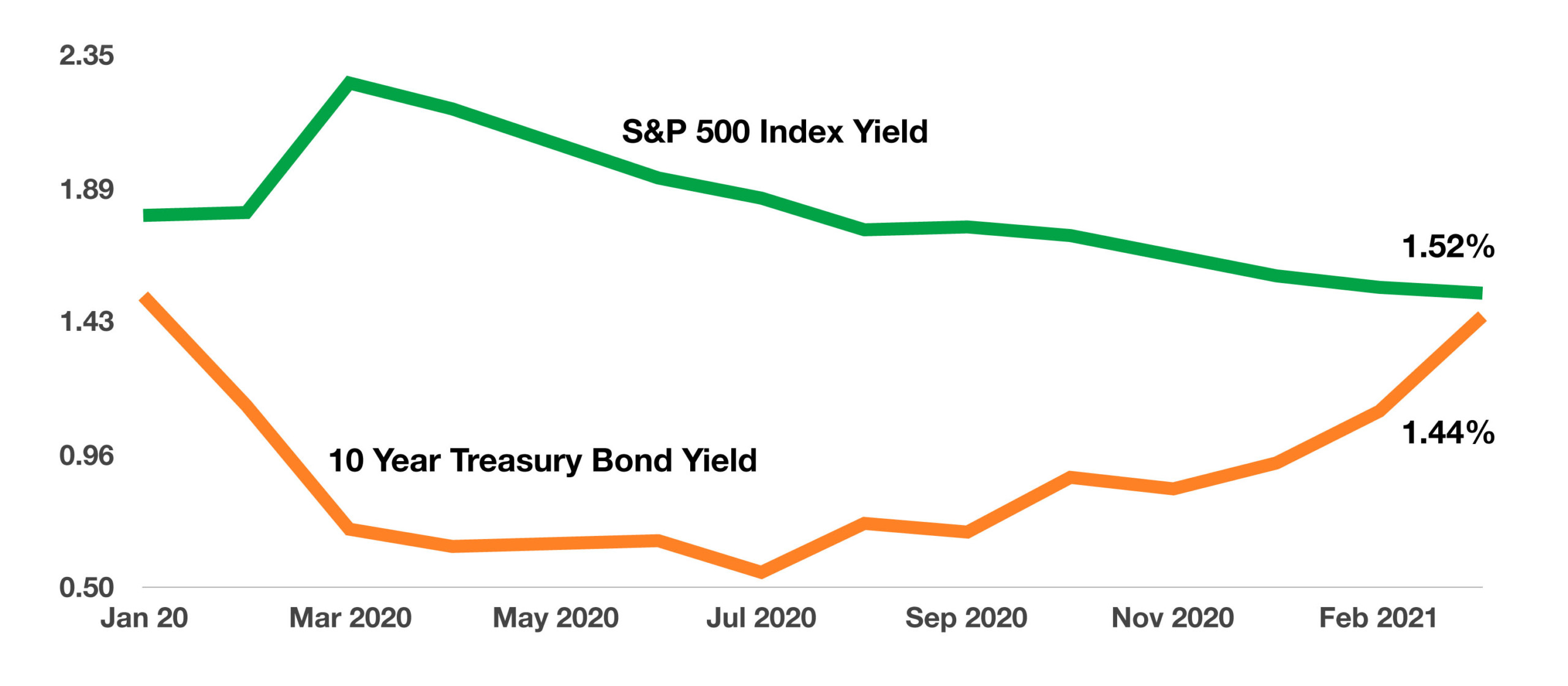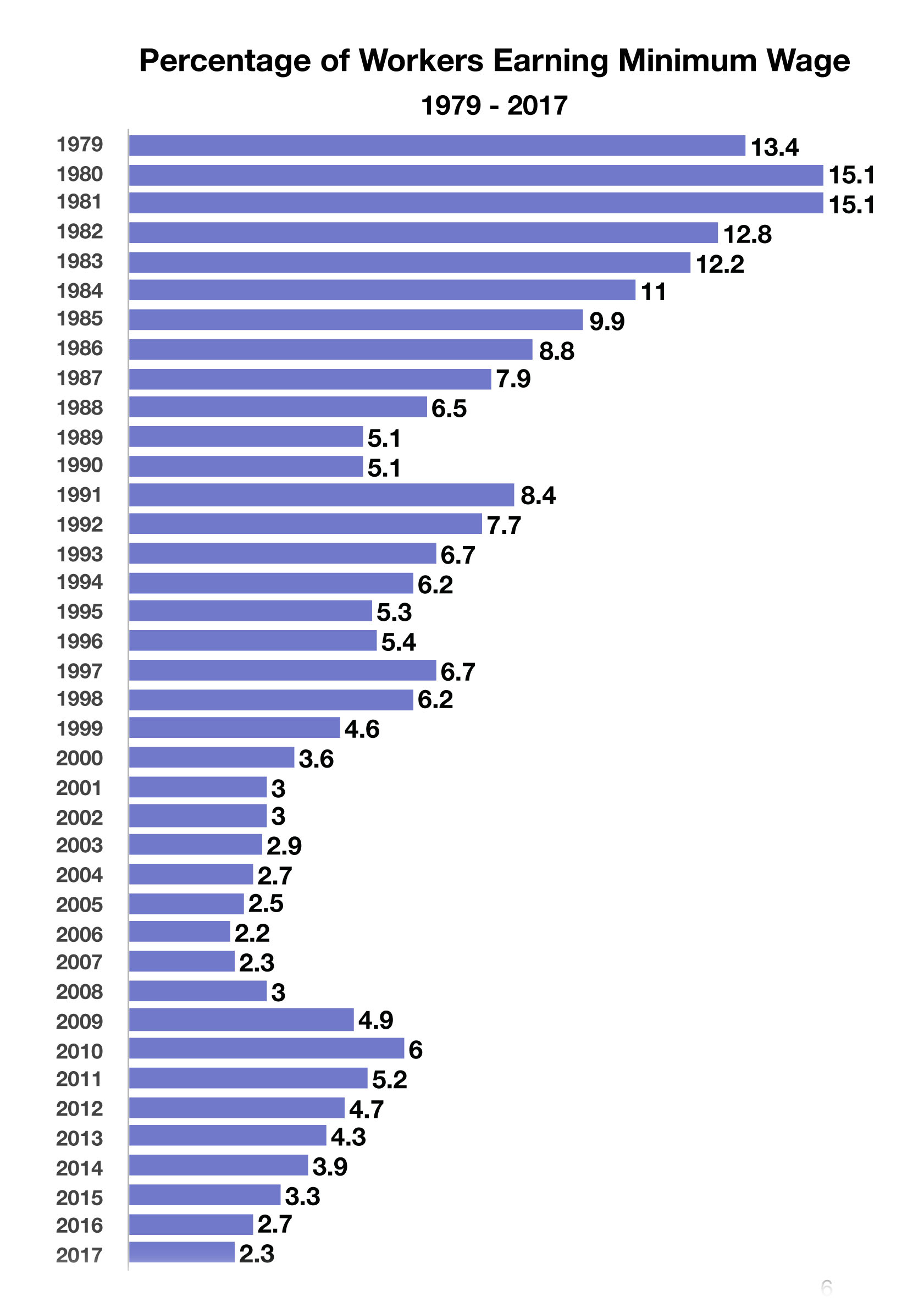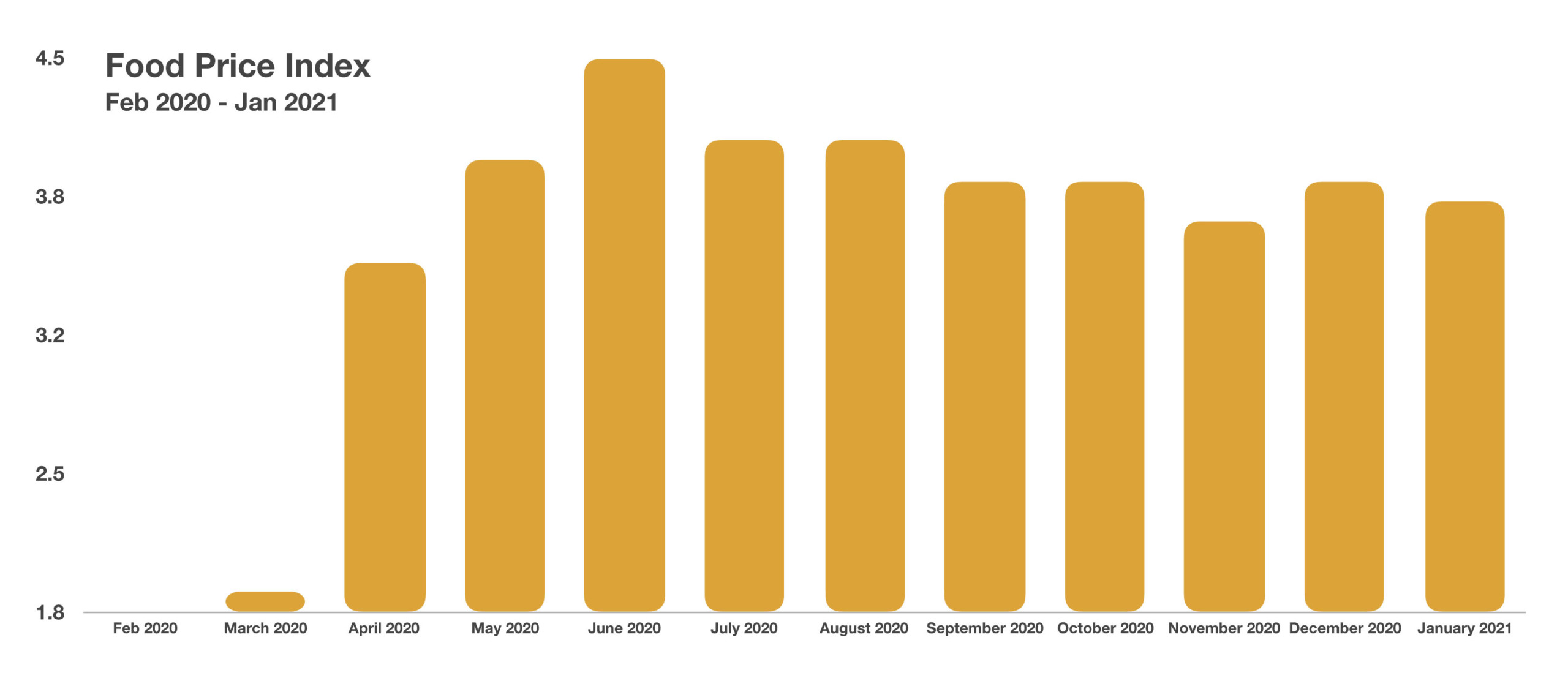Stock Indices:
| Dow Jones | 42,270 |
| S&P 500 | 5,911 |
| Nasdaq | 19,113 |
Bond Sector Yields:
| 2 Yr Treasury | 3.89% |
| 10 Yr Treasury | 4.41% |
| 10 Yr Municipal | 3.31% |
| High Yield | 7.26% |
YTD Market Returns:
| Dow Jones | -0.64% |
| S&P 500 | 0.51% |
| Nasdaq | -1.02% |
| MSCI-EAFE | 17.30% |
| MSCI-Europe | 21.20% |
| MSCI-Pacific | 10.50% |
| MSCI-Emg Mkt | 8.90% |
| US Agg Bond | 2.45% |
| US Corp Bond | 2.26% |
| US Gov’t Bond | 2.44% |
Commodity Prices:
| Gold | 3,313 |
| Silver | 33.07 |
| Oil (WTI) | 60.79 |
Currencies:
| Dollar / Euro | 1.13 |
| Dollar / Pound | 1.34 |
| Yen / Dollar | 144.85 |
| Canadian /Dollar | 0.72 |
Macro Overview
Stimulus payments from the second pandemic relief package were received in January and February, stirring economic activity and increasing personal incomes and expenditures. Some economists, however, believe that the rise in incomes and expenditures are short lived and not consistent. An anticipated third round of stimulus payments is expected to produce additional consumer activity throughout the economy. In addition to cash payments, extended unemployment benefits as well as revised funding for small businesses are planned.
Continued optimism surrounding vaccinations and stimulus funds reaching consumers propelled growth estimates higher along with inflationary expectations. Inflation has become a key concern among economists and market analysts as rising interest rates and elevated food prices have taken hold. Historically, rising interest rates have been symbolic of improving economic activity while higher prices for goods and services are considered inflationary.
Over 72.8 million Americans have received a COVID-19 vaccination as of the end of February as reported by the Centers for Disease Control and Prevention (CDC). Those having been vaccinated with a first dose made up 14.6% of the U.S. population as of Feb 27th, with 7.1% having received a second dose. The recent approval of a single dose vaccination may help speed up the vaccination process for millions of Americans over the next few months.
The IRS began accepting and processing tax returns for tax year 2020 in February, later than usual because of delays related to pandemic relief programs executed in December. Taxpayers have so far flooded the IRS with returns eager to receive delayed tax refunds.
Meme stocks, also known as stocks influenced by rapid communication by online users and traders, gyrated dramatically in February as speculation drove trading volume. Traditional stock traders have scrutinized the recent phenomenon as a fad induced by speculative behavior.
Pentagon officials mentioned that roughly a third of all U.S. troops that have been offered the COVID-19 vaccination have declined it. Vaccinations are still voluntary for military personnel, but may eventually become mandatory as the FDA approves additional vaccines.
Rising rates in February affected mortgage and various consumer loans as the yield on the 10- year Treasury bond surpassed 1.5%, nearly three times the yield from its low of 0.52% in August 2020. The 10-year Treasury bond yield is closely followed by markets as a gauge for inflation and the possible presence of any economic expansion. (Sources: CDC, defense.gov, U.S. Dept of Agriculture, Treasury, Fed)



